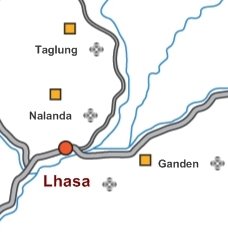The Five Systems of Twenty-one Taras
 It seems that the more popular a deity becomes, more and more forms are created. Tara along with Lokeshvara and Manjushri have many score if not hundreds of different iconographic depictions both described in the Tantric literature and found in paintings and sculpture. Some of these iconographic forms of Tara belong to groups or sets such as the Twenty-one Taras. Three of these groups were created approximately 1000 years ago or more; the Suryagupta, Atisha and Sadhana-samucchaya systems. The first two are named after the Kashmiri and Indian teachers that popularized the systems. The third is named for the Sanskrit text in which a unique system of the Twenty-one Taras is described. The most recent of the systems are the Longchen Nyingtig developed by Jigme Lingpa in the late 1700s, based on the inspiration of Longchenpa, and the system of Chogyur Lingpa from the mid 1800s.
It seems that the more popular a deity becomes, more and more forms are created. Tara along with Lokeshvara and Manjushri have many score if not hundreds of different iconographic depictions both described in the Tantric literature and found in paintings and sculpture. Some of these iconographic forms of Tara belong to groups or sets such as the Twenty-one Taras. Three of these groups were created approximately 1000 years ago or more; the Suryagupta, Atisha and Sadhana-samucchaya systems. The first two are named after the Kashmiri and Indian teachers that popularized the systems. The third is named for the Sanskrit text in which a unique system of the Twenty-one Taras is described. The most recent of the systems are the Longchen Nyingtig developed by Jigme Lingpa in the late 1700s, based on the inspiration of Longchenpa, and the system of Chogyur Lingpa from the mid 1800s.Tara:
1. Solitary Form
2. Three Deity Configuration: Tara, Brikuti and Ekajati
3. Five Deity Configuration
4. Tara and the Eight Fears
5. The Five Systems of the Twenty-one Taras
6. Tara Seventeen Deity Mandala
7. The One-hundred Names (and depictions) of Tara









